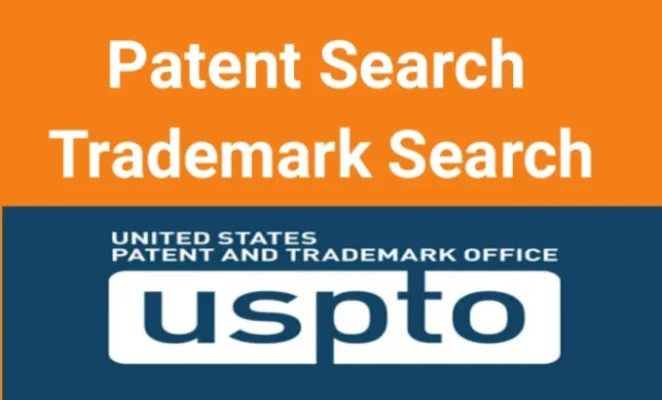
In the fast-paced world of commerce, safeguarding your business against potential legal entanglements is paramount. Failing to conduct proper patent and trademark searches can lead to severe consequences, ranging from listing removal to costly lawsuits. This article delves into the crucial role of these searches in ensuring your business’s legal compliance.
Avoiding Legal Trouble with Patent and Trademark Searches
One of the key benefits of conducting thorough patent and trademark searches is the prevention of unwittingly infringing on existing intellectual property rights. Imagine investing time and resources into developing a product, only to discover later that it is already patented or trademarked by someone else. This scenario not only leads to the loss of your investment but can also result in legal repercussions.
Patent and Trademark Searches Types of Patents: Understanding Your Protection
Utility Patent: Guarding Product Functionality
A utility patent offers protection for the functional aspects of a product. It ensures that no one else can replicate the specific way your product works. This type of patent is particularly vital for inventions that offer unique solutions or improvements in functionality.
Design Patent: Safeguarding Aesthetic Appeal
In contrast, a design patent focuses on safeguarding the visual appearance of a product rather than its functionality. It prevents others from creating a product with the same visual design, providing essential protection for industries where aesthetics play a significant role.
Both utility and design patents typically have a lifespan of about 20 years, allowing ample time for businesses to establish themselves in the market.
Responsibility for IP Compliance: The Seller’s Duty
As a seller, it is incumbent upon you to ensure that your products do not infringe on anyone else’s intellectual property rights. Claiming ignorance or relying on supplier assertions is not a valid defense in legal proceedings. Conducting comprehensive patent and trademark searches is not just a best practice—it’s a legal obligation.
Conducting Patent and Trademark Searches: Navigating the Process
Conducting effective patent searches requires a strategic approach. Utilize resources like the US Patents and Trademarks website (uspto.gov) or Google Patents (patents.google.com). Employing a variety of keywords in your search query is crucial to ensure comprehensive results. For a thorough and exhaustive search, professional assistance is often recommended.
Trademarks: Protecting Names and Logos
Trademarks serve as a vital tool in protecting brand identities. They safeguard names, logos, and other distinctive marks associated with a business. While registration is not mandatory for legal protection, it is highly advisable to prevent potential legal conflicts in the future.
Trademark Search: Verifying Brand Identity
To ascertain if a brand name or logo is trademarked, use the USPTO’s official website, uspto.gov. This invaluable resource provides a comprehensive database of registered trademarks, allowing you to make informed decisions regarding your brand’s identity.
Copyright: Preserving Originality
Copyrights offer protection for original creative works, including literature, music, photographs, and more. To avoid legal complications, it is imperative to always use your own content or obtain the necessary licensing for any third-party material.
Examples: Real-world Instances of Intellectual Property Protection
- Patented Product: Take the example of the Training Mask, a revolutionary fitness product. Discovered through Google Patents, this product was granted a patent in 2015, providing exclusive rights to its functionality until 2032.
- Pending Patent: Consider the Full Face Snorkel Mask, a promising innovation in underwater exploration. Found through Google Patents, the patent application was filed in both 2016 and 2018, indicating its pending status.
- Expired Patent: The Food Chopper, commonly known as the Slap Chop, provides a clear example of a patent’s expiration. This generic term’s patent protection expired in 1994 after 20 years of exclusive rights.
Trademark Status: Verifying Brand Authenticity
To ensure your brand identity remains unique, it’s imperative to check the trademark status. For instance, the brand “Slap Chop” was registered in 2009 and maintains a live status according to the USPTO records.
Caution: Navigating Potential Pitfalls
Avoiding the use of trademarked names or logos in your listings is paramount. Steer clear of terms like Slap Chop, Velcro, or Lego, opting for generic descriptions instead. This simple yet critical precaution can save you from legal entanglements down the line.
Risk with Supplier Information: The Need for Independent Verification
While suppliers play a crucial role in your business, they may not always provide accurate patent or trademark information. Relying solely on their claims can lead to costly oversights. It is imperative to conduct independent searches to ensure the legality of your product offerings.
Conclusion: Diligence in Protection, Prosperity in Business
In the competitive landscape of modern commerce, diligence in patent and trademark searches is not an option—it’s a necessity. Failing to undertake these essential steps can have far-reaching consequences, potentially jeopardizing your business’s success and reputation. By following the guidelines outlined in this article, you equip yourself with the knowledge and tools needed to navigate the intricate world of intellectual property rights. Remember, a proactive approach to legal compliance is the cornerstone of a thriving business.
FAQs:
- Is registration mandatory for trademark protection?
- No, registration is not mandatory for trademark protection. However, it is highly recommended to avoid potential legal conflicts in the future.
- What should I do if my product is similar to an existing patented product?
- If your product shares similarities with an existing patented product, seek legal advice to navigate the complexities of intellectual property rights.
- How long does patent protection last?
- Both utility and design patents typically have a lifespan of about 20 years, providing ample time for businesses to establish themselves in the market.
Read our full guide here: Finding Reliable Supplier for Amazon Business: A Step-by-Step Guide 2024
